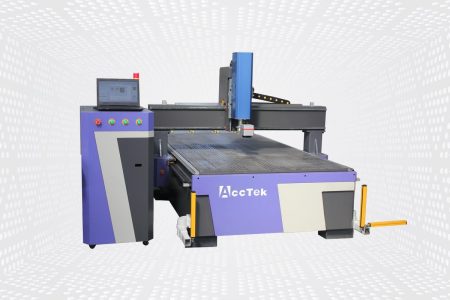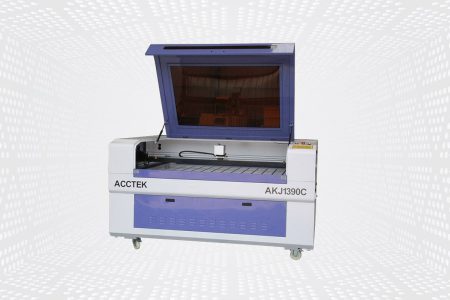Jahr Garantie
0
Aufträge
0
+
Machine Models
0
+
AccTek CO2-Laserbeschriftungsmaschine
The CO2 laser marking machine is a versatile and effective tool that can be used to mark and engrave a variety of materials, including wood, plastic, leather, glass, and ceramics. Using a focused, high-intensity infrared beam, it can quickly and accurately engrave intricate patterns, text, logos, and images onto material surfaces without any physical contact.
The CO2 laser marking machine is an excellent choice for businesses that need to mark or engrave materials. With a high degree of customization, flexibility, and speed, these machines help businesses increase productivity and efficiency while maintaining the highest standards of quality and precision. Furthermore, they are a cost-effective solution requiring little maintenance. Whether you want to mark your products with unique identifiers, logos, or branding elements or need to engrave intricate patterns and designs on a variety of materials, a CO2 laser marking machine could be the ideal solution for your needs.
The CO2 laser marking machine is one of the most versatile and efficient methods of marking or engraving materials. It is widely used in manufacturing, advertising, and design industries for its speed, precision, and ease of use.

Video abspielen über Vollständig geschlossene CO2-Laserbeschriftungsmaschine
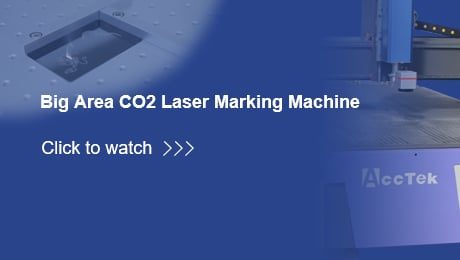
Video abspielen über Großflächige CO2-Laserbeschriftungsmaschine
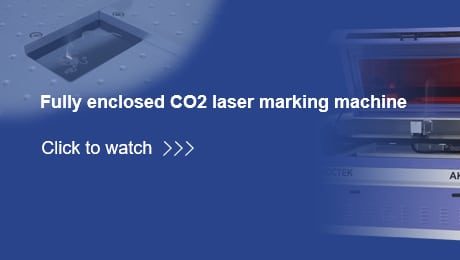
Video abspielen über Vollständig geschlossene CO2-Laserbeschriftungsmaschine
Vorteile der CO2-Laserbeschriftungsmaschine

Vielseitigkeit
Vielseitigkeit
Marks wood, plastic, and more, adapting to diverse materials and industries.
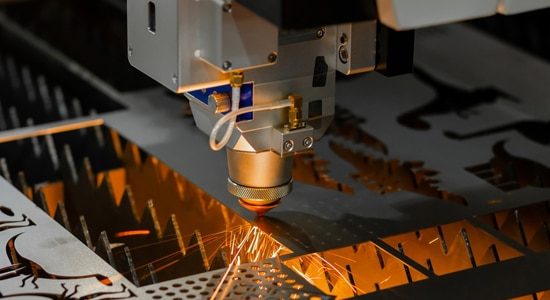
Hohe Präzision
Hohe Präzision
Achieves intricate designs and small text with exceptional accuracy.

Berührungsloser Prozess
Berührungsloser Prozess
Preserves material integrity, ensuring no damage during marking.
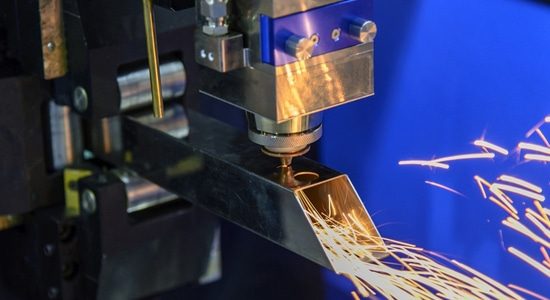
Permanent Markings
Permanent Markings
Endures against wear, weather, and chemicals, maintaining clarity over time.
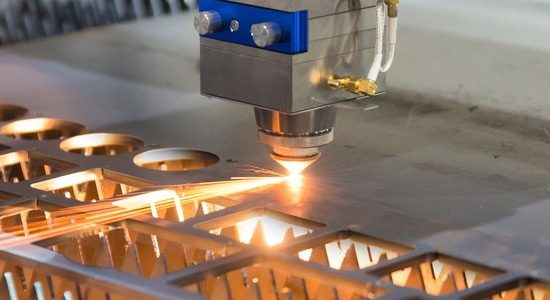
High-speed marking
High-speed marking
Enhances production efficiency by swiftly marking multiple items.

Geringer Wartungsaufwand
Geringer Wartungsaufwand
Requires minimal upkeep, reducing downtime and operational costs.

Environmentally Friendly
Environmentally Friendly
Uses clean, efficient CO2 gas, minimizing environmental impact.

Kosteneffizient
Kosteneffizient
Long-term savings through efficiency, reliability, and reduced consumable expenses.
Häufig gestellte Fragen
Was ist eine CO2-Laserbeschriftungsmaschine?
The CO2 laser marking machine is a type of laser marking system that utilizes a carbon dioxide (CO2) laser to create marks or engravings on various materials. These machines use a high-powered CO2 laser beam to remove material or change its appearance, typically by vaporizing it.
The CO2 laser marking machine is commonly used for marking materials such as wood, paper, cardboard, glass, plastics, leather, fabrics, ceramics, and some metals. They are popular in industries such as manufacturing, electronics, automotive, aerospace, medical devices, and packaging.
The advantage of CO2 lasers for marking applications is their ability to produce high-quality, precise marks quickly and efficiently. They are often used for applications requiring permanent marks, such as serial numbers, barcodes, logos, and other product identification information.
The CO2 laser marking machine offers flexibility in terms of marking depth, line width, and design complexity, making it suitable for a wide range of marking tasks. They are also relatively easy to integrate into production lines and can be automated for high-volume marking operations.
Wie hoch ist der Preis einer CO2-Laserbeschriftungsmaschine?
The price of a CO2 laser marking machine can vary widely, depending on several factors, including the power output of the laser, the size and capabilities of the machine, and the manufacturer or supplier of the machine. In addition, it is also possible that the price of a CO2 marking machine will also be affected by the size and complexity of the object being marked. For example, marking small items may require more precise, specialized machines, which may increase the price.
Nach den Erfahrungen von AccTek liegen die Kosten für eine CO2-Lasermarkiermaschine der Einstiegsklasse mit einer Markierungsfläche von etwa 100 mm x 100 mm zwischen 1 TP4T2.000 und 1 TP4T5.000 US-Dollar. Maschinen mit mehr Leistung und erweiterten Funktionen können zwischen $10.000 und $50.000 oder mehr laufen.
Diese Preise sind nur Schätzungen und können je nach den spezifischen Bedürfnissen und Anforderungen der Kunden variieren. Wenn Sie einen genaueren Preis erhalten möchten, können Sie sich an uns wenden. Unsere Ingenieure werden Ihnen maßgeschneiderte Lösungen und genaue Angebote entsprechend Ihren Bedürfnissen und Anforderungen unterbreiten.
Es ist wichtig zu beachten, dass die Kosten einer CO2-Laserbeschriftungsmaschine nur einer der Faktoren sind, die bei der Auswahl einer Maschine zu berücksichtigen sind. Weitere wichtige Überlegungen sind die Qualität der Maschine, Zuverlässigkeit, Verfügbarkeit von Support und Service und ob die Maschine für Ihre spezifischen Markierungsanforderungen geeignet ist.
How Accurate Is CO2 Laser Marking?
The accuracy of CO2 laser marking depends on various factors such as the quality of the laser system, the type of material being marked, the design of the marking pattern, and the settings used during the marking process. Generally, CO2 laser marking machines are capable of achieving high levels of accuracy and precision. They can produce fine details, intricate designs, and sharp edges on a wide range of materials.
The accuracy of CO2 laser marking is often measured in terms of spot size or beam diameter, which refers to the size of the laser beam focused on the material. The smaller the spot size, the higher the resolution and accuracy of the marking. Additionally, the control software used with CO2 laser marking machines allows for precise control over the marking parameters such as power, speed, and frequency, which can further enhance accuracy.
CO2 laser marking is known for its ability to produce precise and consistent marks with high repeatability, making it suitable for a wide range of industrial and commercial applications where accuracy is critical. However, it’s essential to optimize settings and parameters based on the specific material and marking requirements to achieve the desired level of accuracy.
How Durable Is CO2 Laser Marking?
The durability of CO2 laser marking depends on several factors, including the material being marked, the depth of the mark, and the environmental conditions to which the marked object will be exposed.
In general, CO2 laser marking produces durable marks that are resistant to fading, smudging, or rubbing off under normal handling and use. The laser beam effectively alters the surface of the material, creating a permanent mark that penetrates the material’s surface layer.
The durability of CO2 laser marks can vary depending on the material being marked:
- Metals: CO2 laser marking can produce highly durable marks on metals such as stainless steel, aluminum, titanium, and various alloys. The marks are often resistant to abrasion, corrosion, and chemical exposure.
- Plastics: CO2 laser marking can create durable marks on many types of plastics, including acrylic, ABS, polycarbonate, and polyethylene. The durability of the mark depends on factors such as the type of plastic, the marking settings, and the surface preparation.
- Glass: CO2 laser marking can produce durable marks on glass surfaces, creating frosted or annealed marks that are resistant to scratching and fading.
- Organic Materials: CO2 laser marking can be used to mark organic materials such as wood, leather, paper, and cardboard. The durability of the mark depends on factors such as the material’s composition, surface texture, and exposure to moisture or UV light.
Was sind die Nachteile der CO2-Lasermarkierung?
While CO2 laser marking offers many advantages, there are some disadvantages to consider:
- Limited Marking on Certain Materials: CO2 lasers are not suitable for marking on all materials, particularly those that do not absorb the wavelength of the CO2 laser effectively. For example, CO2 lasers may not produce satisfactory marks on some metals that reflect or dissipate the laser energy.
- Limited Color Options: CO2 laser marking typically produces marks in grayscale or monochrome, depending on the material being marked. Unlike some other marking methods like inkjet printing, CO2 lasers cannot produce full-color marks.
- Material Limitations: While CO2 lasers can mark a wide range of materials, they may not be suitable for all applications or material types. For example, certain plastics may release harmful gases or produce inconsistent marks when marked with CO2 lasers.
- Initial Setup and Maintenance: CO2 laser marking machines require initial setup and calibration to ensure optimal performance. Additionally, regular maintenance is necessary to keep the laser system functioning correctly, including cleaning optics, replacing consumable parts, and monitoring the laser tube lifespan.
- Heat Generation: CO2 lasers generate heat during the marking process, which can affect the material being marked, especially thermally sensitive materials. Care must be taken to control the heat input to prevent damage or distortion of the material.
- Cost: While CO2 laser marking machines offer high precision and versatility, they can be relatively expensive compared to some other marking methods. The initial investment cost includes the purchase of the laser system, installation, and training.
How To Maintain A CO2 Laser Marking Machine?
Maintaining a CO2 laser marking machine is essential to ensure its optimal performance, longevity, and safety. Here are some general maintenance steps for maintaining a CO2 laser marking machine:
- Regular Cleaning: Clean the exterior of the machine regularly to remove dust, debris, and other contaminants. Use a soft cloth and non-abrasive cleaner to wipe down the surfaces. Pay special attention to the optics, lens, and mirrors, as any dirt or residue can affect the quality of the laser beam.
- Optics Inspection and Cleaning: Periodically inspect the optics, including the focusing lens and mirrors, for any signs of damage, dirt, or debris buildup. Clean the optics using appropriate cleaning solutions and techniques recommended by the manufacturer. Be careful not to scratch or damage the optics during cleaning.
- Alignment Check: Check the alignment of the laser beam periodically to ensure it is properly aligned with the marking area. Misalignment can result in poor marking quality and reduced efficiency. Follow the manufacturer’s instructions for adjusting the beam alignment if necessary.
- Cooling System Maintenance: Maintain the cooling system of the laser machine according to the manufacturer’s recommendations. This may include regularly checking coolant levels, replacing coolant filters, and ensuring proper circulation to prevent overheating of the laser tube.
- Laser Tube Inspection: Periodically inspect the CO2 laser tube for any signs of damage, such as cracks or leaks. Replace the laser tube if it shows signs of wear or deterioration. Follow proper safety procedures when handling and replacing the laser tube.
- Software Updates: Keep the control software of the laser marking machine up to date by installing any available updates or patches provided by the manufacturer. This ensures compatibility with the latest operating systems and may include performance improvements or bug fixes.
- Training and Education: Provide training for operators on the proper use and maintenance of the CO2 laser marking machine. Educate them on safety protocols, maintenance procedures, and troubleshooting techniques to prevent accidents and minimize downtime.
- Scheduled Preventive Maintenance: Implement a scheduled preventive maintenance program based on the manufacturer’s recommendations. This may include regular inspections, cleaning, lubrication, and calibration to keep the machine operating smoothly.
What Materials Can CO2 Laser Marking Machine Mark?
The CO2 laser marking machine can mark a wide variety of materials across different industries. Some common materials that can be marked with a CO2 laser include:
- Plastics: CO2 lasers can mark various types of plastics, including acrylic, ABS, polycarbonate, polyethylene, polypropylene, and PVC.
- Wood: CO2 lasers are commonly used to mark wood materials, including hardwoods, softwoods, plywood, MDF (medium-density fiberboard), and veneers.
- Paper and Cardboard: CO2 lasers can mark paper and cardboard materials, making them suitable for applications such as packaging, labeling, and artistic designs.
- Glass: CO2 lasers can mark glass surfaces, creating frosted or annealed marks that are resistant to scratching and fading.
- Fabrics and Textiles: CO2 lasers can mark fabrics and textiles made from natural fibers (e.g., cotton, silk, wool) or synthetic fibers (e.g., polyester, nylon).
- Rubber: CO2 lasers can mark rubber materials, such as silicone rubber, EPDM, neoprene, and natural rubber, for industrial and commercial applications.
- Leather: CO2 lasers can mark leather materials, including genuine leather, synthetic leather, suede, and leatherette.
- Anodized Aluminum: CO2 lasers can mark anodized aluminum surfaces, creating high-contrast marks without damaging the underlying material.
- Some Metals: While CO2 lasers are primarily used for marking non-metallic materials, they can also mark certain metals, such as stainless steel, titanium, and coated metals, with the aid of specialized marking solutions or coatings.
Is The CO2 Laser Marking Process Environmentally Friendly?
The environmental friendliness of the CO2 laser marking process depends on several factors, including the materials being marked, the marking parameters used, and the overall efficiency of the marking operation. Here are some aspects to consider regarding the environmental impact of CO2 laser marking:
- Energy Consumption: CO2 laser marking machines typically require electricity to operate. While they can be energy-efficient compared to other marking methods, such as mechanical engraving or chemical etching, the energy consumption can still contribute to environmental impact, especially if the electricity is sourced from non-renewable sources.
- Material Waste: CO2 laser marking is a non-contact, non-destructive marking method, which means it generates minimal waste compared to traditional methods like mechanical engraving or chemical etching. However, some materials may produce fumes or debris during the marking process, which should be properly ventilated or captured to prevent environmental pollution.
- Chemical Usage: Unlike some marking methods that require chemical etchants or inks, CO2 laser marking typically does not involve the use of chemicals that can be harmful to the environment. This can reduce the risk of chemical spills, emissions, and waste disposal associated with traditional marking methods.
- Material Compatibility: CO2 lasers can mark a wide range of materials, including plastics, wood, paper, and glass, without the need for additional consumables or processing chemicals. This versatility can reduce the overall environmental impact by minimizing the use of specialized materials and chemicals.
- Emissions: CO2 laser marking machines emit laser radiation during operation, which should be properly contained and controlled to ensure worker safety and environmental compliance. Additionally, some materials may produce emissions or volatile organic compounds (VOCs) when marked with a CO2 laser, requiring proper ventilation or filtration systems to mitigate environmental impact.
Holen Sie sich Laserlösungen
Wir können das Design nach Ihren Wünschen anpassen. Sie müssen uns nur Ihre Anforderungen mitteilen und unsere Ingenieure liefern Ihnen in kürzester Zeit schlüsselfertige Lösungen. Unsere Preise für Lasergeräte sind sehr wettbewerbsfähig, bitte kontaktieren Sie uns für ein kostenloses Angebot. Wenn Sie andere Dienstleistungen im Zusammenhang mit Lasergeräten benötigen, können Sie sich auch an uns wenden.

